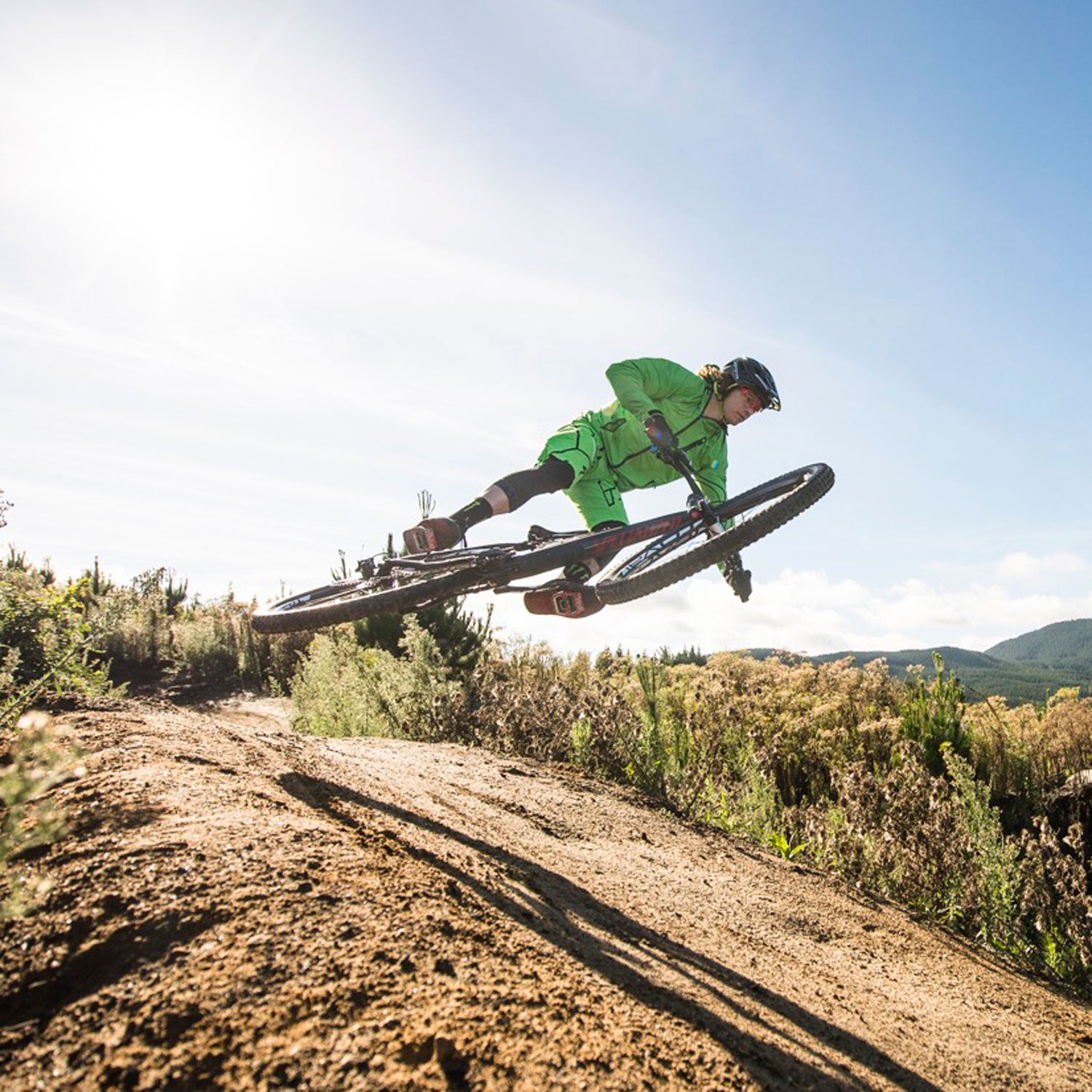Just when I was convinced that Specialized had built the ultimate trail bike in the Enduro 29, the company has announced the . This was the first mass-production mountain bike when it launched in 1981, and over the years it's morphed into the do-everything stopgap machine between light and fast XC bikes and heavier duty all-mountain and enduro rides.
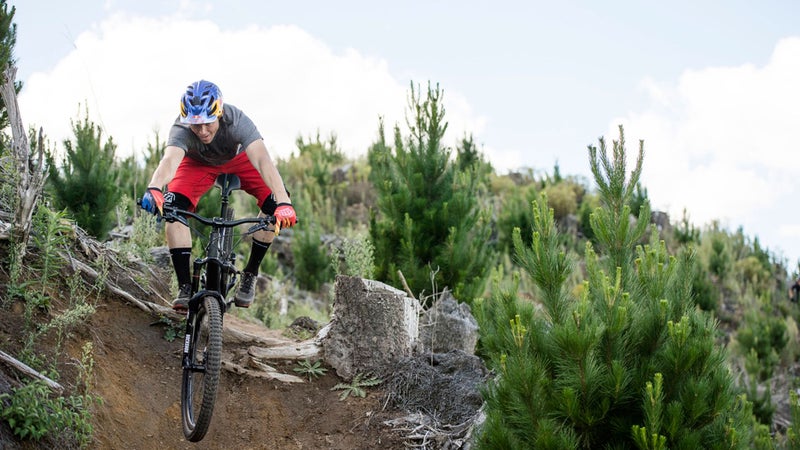
The Stumpjumper saw its last major overhaul in 2012 (garnering ║┌┴¤│ď╣¤═°ÔÇÖs Gear of the Year), though a was added a year ago, which was the first bike with mid-size wheels that Specialized produced. The┬á2016 Stumpy FSR will see a full line-up of both 29er and 650B options, as well as the addition of a new 27.5+ range with the 6Fattie. Specialized is also adding an analogous, womenÔÇÖs specific model, , which will be available in 650B and 6Fattie, but not 29.
Generally speaking, the bike continues on the industry trend toward slacker angles and more travel. Read:┬áthese should be the most capable Stumpys ever. The tube shaping, especially around the seat cluster, is more refined and delicate looking than in previous versions, and thereÔÇÖs internal cable routings via channels built into the frame. The rear triangle has also been revised┬áwithout a bridge between the seat stays, which makes space for bigger tires, though the linkage and stays are now bigger and beefier to maintain stiffness.
The most interesting change is the built-in SWAT feature. In the last couple of years, Specialized has been pushing solutions, dubbed SWAT (Storage, Air, Water, Tools), aimed at making sure cyclists have everything they need on them while riding. This included multi-tools affixed to water bottle cages or slots in the bike frame, chain tools in the headset, and bib shorts with storage pockets. On the Stumpjumper, thereÔÇÖs now storage space inside the down tube that's┬áaccessible by way of a hatch door built in underneath the primary water bottle cage.
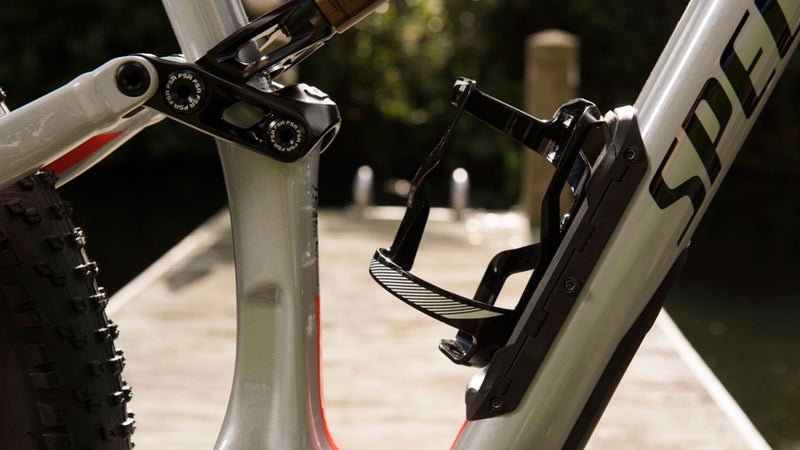
Two included cloth wraps, big enough for a tube and pump, keep the tools from rattling around, and a plastic plug at the bottom of the down tube ensure that nothing slips into the bottom bracket area. ItÔÇÖs an elegant refinement that basically ensure you never break down without the gear you need (or ). The feature adds 200 grams to the frame weight, though Specialized says that, thanks to other component changes, complete bike weights shouldnÔÇÖt go up from previous editions.
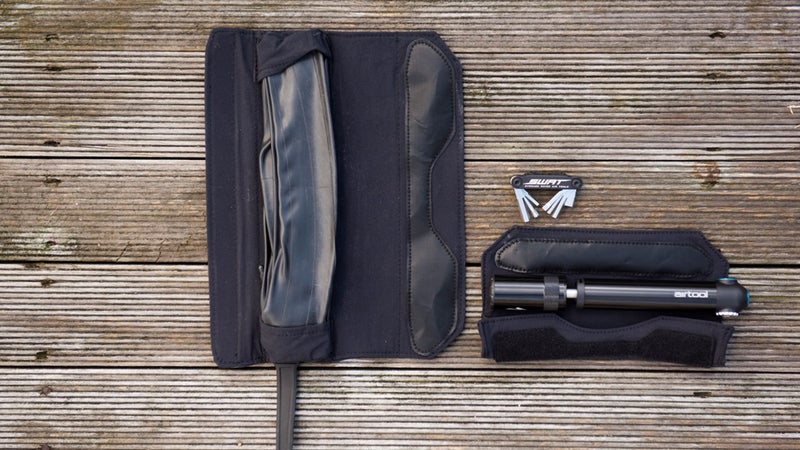
Specialized has also committed to specÔÇÖing every Stumpjumper FSR and Rhyme,┬ádown to the least expensive builds, with dropper seat posts. Along with that news, the company debuted a new version of their reliable Command Post IRCC (Internal Routing Cruise Control). It still uses the companyÔÇÖs three-stage adjustments, but now thereÔÇÖs a 10-step micro-adjustment┬áon the middle setting, which makes it easier to find a drop to suit your needs.
Specialized rolled out the new Stumpjumpers in Rotorua, New Zealand, following the inaugural , and I got three solid days of riding aboard a range of models, including two days on the 29er and one on the 650B. There were ┬áavailable for the women, and feedback was positive. All of the 6Fatties on hand were prototypes only and therefore couldnÔÇÖt be ridden.
Stumpjumper FSR 29
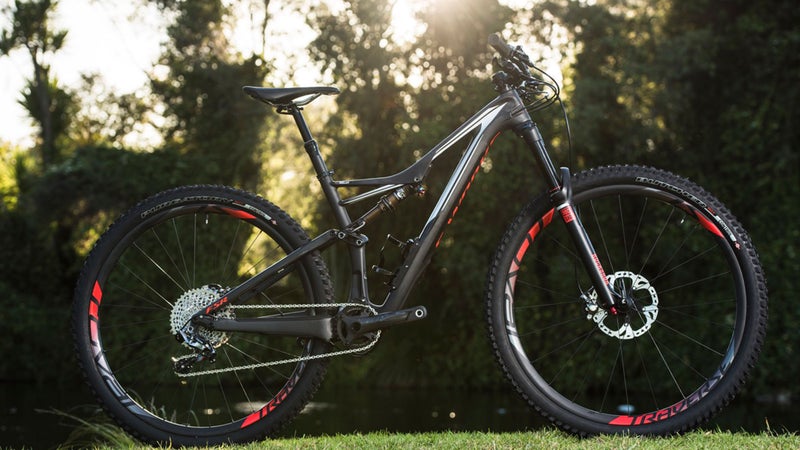
The 29er gets a bit more travel, with 135mm out back and a 140mm fork, and its head tube angle, at 67.5 degrees, is 1.5 degrees slacker than before. There are no more Brain shocks or forks at this level, with Specialized backing off the auto-platform feature for a more open and softer ride. The 29er will come in three carbon models (S-Works at $8,900, Expert at $5,900, and Comp Carbon at $3,800) and two alloy (Elite at $4,300 and Comp at $2,900). All bikes will roll on relatively fat rims, with internal dimensions between 29mm and 30mm.
I am a 29er devotee through and through, and the new Stumpjumper FSR didnÔÇÖt disappoint. This bike has the stability and confidence that IÔÇÖve come to expect from the big wheels, but itÔÇÖs still playful and happy to jump around on the trail, which is partly due to the shortened chain stays (just 435mm). It sits between the Epic and the Enduro in capabilities, though the dropper post, 35mm diameter on the Pike fork, and wide Traverse SL rims mean it leans toward the gravity side rather than XC. Before this bike arrived, I had all but decided that the Enduro was the ultimate one-bike quiver as it is capable enough to ride any technical downs, even pro-level downhill courses,┬ábut still climbs exceptionally well. The Stumpy FSR 29er could well trump that bike, however, as itÔÇÖs a couple of pounds lighter and felt┬ánearly as capable on the rooted┬ásteeps at Rotorua.┬á
Stumpjumper and Rhyme FSR 650B
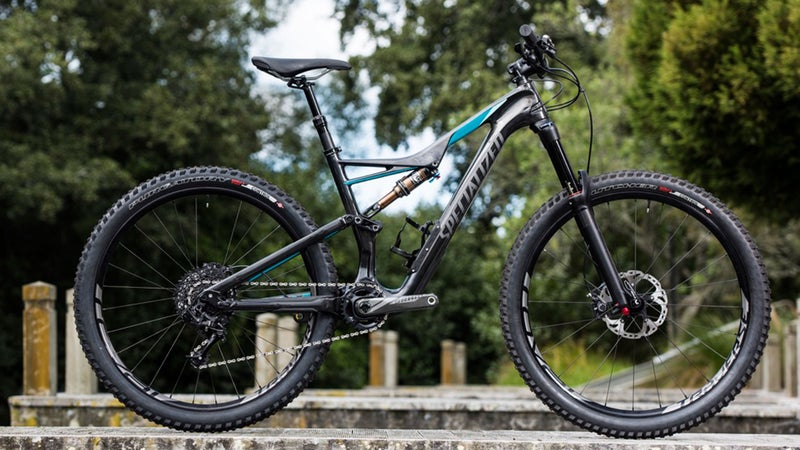
The 650B models keep the same travel as last year, with 150mm front and rear, though the head angle drops a full degree to 67 degrees. At a very tight 420mm, the chain stays are even shorter than on the 29, which makes for savagely fast accelerations and a super snappy feel. Geometry on the Rhyme is identical to the 650B in size small and medium but adds an extra small to accommodate even more compact riders; seat posts, stems, bars, and other components are sized to better accommodate women. Like the 29er, the 650B will be available in three carbon models (S-Works at $8,600, Expert at $5,900, and Comp Carbon at $3,800) and two alloy (Elite at $4,300 and Comp at $2,900). The Rhyme will come in two carbon models (Expert at $5,900 and Comp Carbon at $3,800) and one alloy (Comp at $2,900).
Though I only logged one day on the 650B, I was again impressed. The day turned out to be a wet, muddy, slippery mess on the forest trails outside of town, and the quick steering and slack angles proved perfectly forgiving for the conditions. This bike didnÔÇÖt seem to chug uphill quite as quickly as the 29er, but it felt as confident and even more nimble on descents. Wheel size will likely be a personal preference dictated by how you like a bike to feel and your local terrain, but itÔÇÖs nice to have the smaller wheels as an option for those who prefer them and for smaller riders who may find the 29ers cumbersome.
Stumpjumper and Rhyme FSR 6Fattie
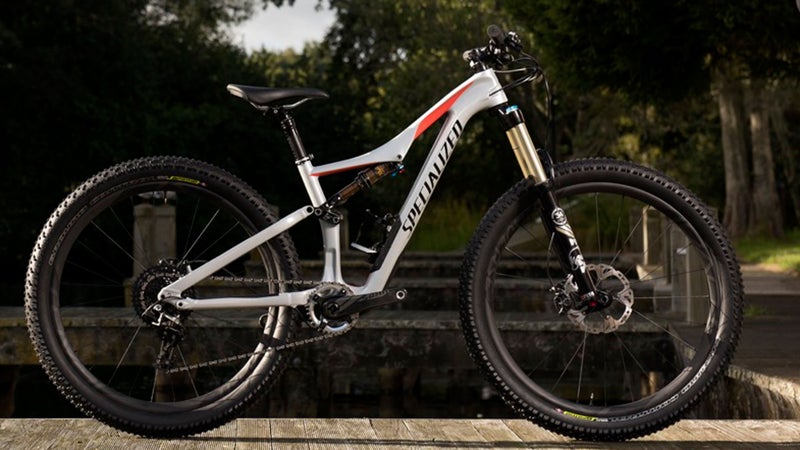
Plus-size bikes are all the talk, and Specialized becomes just the second manufacturer, after Rocky Mountain, to launch a full-suspension 27.5-plus model. The big idea is to put fatter tires, in this case three-inch-wide Ground Controls, on 650B rims to provide a ride with more traction and control than a standard setup. The resulting wheel combination measures just shy of the height of a regular 29er though the added girth means that the geometry must be reconfigured. The 6Fattie models, of which there are four ranging from $3,400 up to $8,600, get 135mm rear travel, a 150mm fork, and a 67-degree head tube angle.
As this is an emerging category, itÔÇÖs not exactly clear where the 6Fattie fits in the line, though Specialized stresses that they donÔÇÖt see it as a replacement for either the 650B or 29er models. Instead, they point out that these bikes will add stability and traction that surpasses either of the more typical modelsÔÇöat a small weight penalty. In my testing, which involved months of┬áriding these tires on a 29-inch Enduro, I found the 6Fattie wheels to be excellent for loose, rubbly trails where traction is a concern and also on technical ups that otherwise might not be ridable. The 6Fattie seemsÔÇöat least on paperÔÇölike an even more versatile evolution of our 2015 Gear of the Year-winning Salsa Bucksaw. ItÔÇÖs also worth noting that 29-inch rims will fit on this bike, meaning that two sets of wheels could make for even more flexibility (though SpecializedÔÇÖs adoption of the new Boost hub standards mean that current wheels wonÔÇÖt fit).┬á┬á
Bottom Line
Rotorua proved an ideal testing ground for a run on the new bikes. We got everything from buff, bike park-style riding on berms and jumps to wilderness adventure with grinder climbs and blazing descents choked with┬ároots and rocks. This was not a comprehensive testÔÇöweÔÇÖll undertake that in the coming months as samples become availableÔÇöbut the initial impression is that the new Stumpjumpers are a step above previous versions. The slacker angles, stiffer forks, and meatier tires inspired lots of hooting-and-hollering good times, even when it poured all day and turned the trails slick as snot.┬á
With the exception of the SWAT system and the 6Fattie models, the changes are evolutionaryÔÇönot revolutionaryÔÇöbut the improvements are noticeable. With all the money going into engineering, as well as the refinement of geometry and components, the Stumpjumper FSR, as with mountain bikes in general, just keeps getting better.
I have loved the Enduro 29 since it was launched, but it sometimes feels like a bit too much bike for the average trail. ThatÔÇÖs no ding against the E29ÔÇöitÔÇÖs as capable a bike as you can get for its size and out-climbs smaller lighter machinesÔÇöbut unless you live somewhere with extremely burly riding, say Moab or Whistler, it can feel like overkill. The new Stumpjumper FSR could well be the solution, a mid-travel trail bike for every occasion. WeÔÇÖll just have to wait a few months for test models to see whether these bikes are as good as they seemed on first look.


